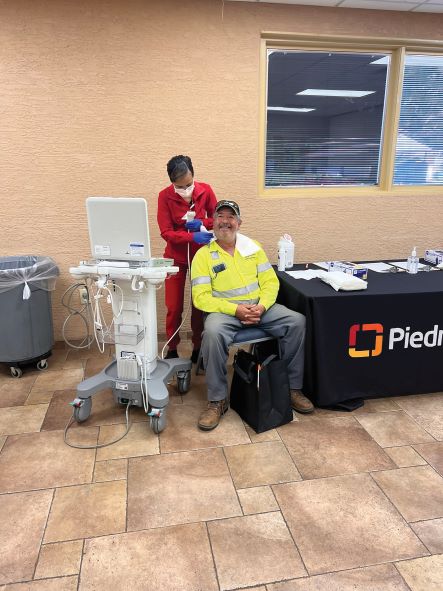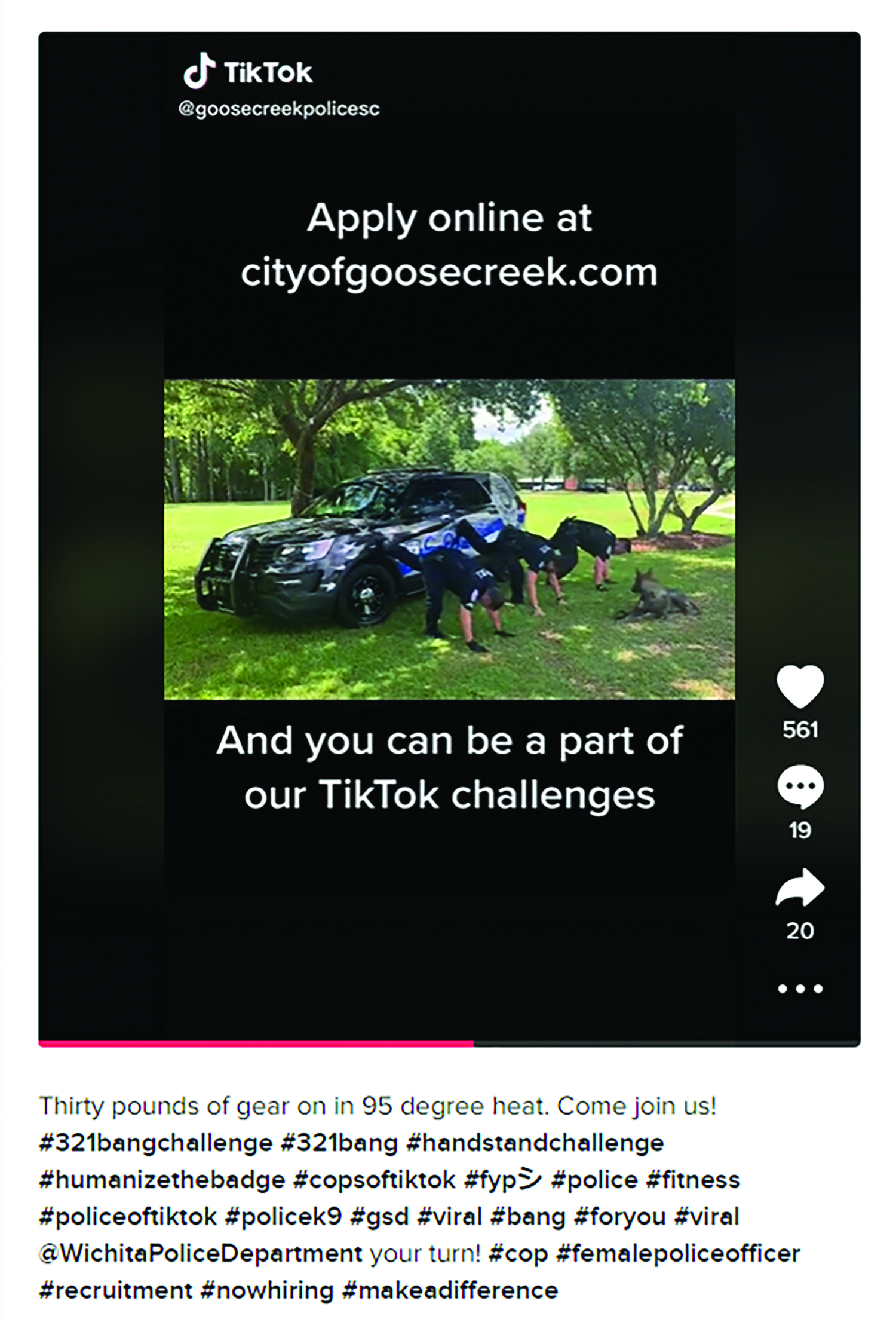In a time of low unemployment, when there are seemingly more jobs available than qualified workers to fill them, city and town leaders find themselves using many tactics to try to keep positions filled and cities running smoothly.
From offering perks like tuition reimbursement to paying relocation expenses for new hires to turning to social media channels to help reach potential workers, local leaders are pulling out the stops to try to find, recruit and retain employees.
City human resources managers agree on one thing: It’s not easy.
It’s also not unique — municipalities in every corner of South Carolina and across the country are facing this challenge. While jobs lost because of the pandemic have mostly rebounded, it remains difficult in the current, highly competitive job market to find workers interested in pursuing jobs in the public sector.
“Being a utility municipality, we have a need for people who have to get their hands dirty,” said Robin Entrekin, director of risk management and human resources for Clinton. “Not every job we have involves the skills techies possess. Turning wrenches and laying pipe still involves manual labor. It’s a struggle for sure.”
And while part of the challenge may be the types of jobs, pay also plays a big role, with cities typically unable to match the salaries of private industry.

North Augusta Public Safety officers are joined by Auggie, the mascot of the
Augusta GreenJackets baseball team, at a job fair. Photo: City of North Augusta.
“Entry-level pay is the big thing on everyone’s mind. We’ve done a compensation study to make sure we are internally equitable and externally competitive,” said J.D. McCauley, North Augusta’s manager of human resources and risk management. “We are competitive in our market, but with government, you’re never competitive with salaries in the private sector.”
McCauley also said the city cannot simply raise entry-level salaries because that would create salary compression and would create issues among existing employees. “Then we’d lose long-term people because our pay practices aren’t equitable.”
That’s where benefits, work culture and other perks come into play for cities and towns across the state. “We bank on the benefit side of the house,” McCauley said. “And we focus more on the employees that we have. We want to do things that create a culture where people want to be here. That’s the focus of what we do that’s different.”

Health fairs are among the incentives that North Augusta offers its employees.
Photo: City of North Augusta.
Cities push the importance of creating a culture that values its workers in various ways, a practice that helps attract new workers and hold onto good ones.
Goose Creek recently implemented a relocation incentive program after receiving an influx of out-of-state job candidates, according to Hilary VanOrsdel, human resources director for the city.
“The program reimburses moving expenses for new employees who choose to make Berkeley County their home,” she said. “This has been beneficial not only for new hires, but in expediting their start date.”
Once the workers arrive, it’s important to show appreciation for a job well done.
North Augusta, for example, offers incentives such as employee appreciation events, health fairs, training sessions and tuition reimbursement programs. The city administrator and the mayor hold town hall meetings with employees to discuss concerns and receive feedback.
“We want to help our employees grow while they are here,” McCauley said, adding that the city offers training and tuition reimbursement, even if it is not associated with the employee’s current job. “Part of the benefit of being here is we’re going to help pay for training and education so they are ready for the next step in their career, where ever that may be.”
In Clinton, Entrekin said the most important step is making good hires upfront, and then doing everything possible to retain strong employees.
“We want long-term, career-minded and dedicated employees. My motto is ‘no hire [at all] is better than a bad hire.’ It’s easy to hire a bad employee in, not so easy to get them out,” he said. “We want to make it enticing to come to work for us and then we do everything we can to keep them. We are constantly evaluating our pay scales as well as perks and benefits, but trying to keep up with inflation and competition is causing a lot of sleepless nights and gray hair these days.”
Entrekin knows the city is “climbing a steep mountain trying to match dollar-for-dollar in salary with the private sector. So, we put emphasis on trying to point out our perks and benefits that can put money into the applicant’s pocket in another form.“
Clinton’s employee medical insurance coverage is 100% funded by the city, while spousal, children and family coverage is supplemented. And the city points out the importance of an easy travel distance to work, which can mean less money and time spent on commuting.
“While the hourly rate is less in a lot of cases, their take-home pay is more due to the realized savings. A lot of private-sector companies that directly compete with city services do have higher salaries, but often don’t have the perks and benefits we can offer,” Entrekin said. “Exit interviews are used to determine why a person is leaving and also to help them understand why they should stay. We’ve moved the exit interview to the front of the process instead of the end. If we can entice them to get them here, we think we can keep them here for the most part.”
But the first step may be finding the right people – and cities are tapping into new ways to reach them.
In North Augusta, which faced substantial turnover around 2019 at a moment when many long-time employees retired, the city started creating videos that helped explain city jobs. It was a way to help educate the community on public service jobs along with recruiting potential workers.
Goose Creek has turned to social media, which has the potential of reaching candidates “anywhere, anytime,” VanOrsdel said.

The Goose Creek Police Department has captured attention by using the
social media platform TikTok as a recruitment tool. Photo: City of Goose Creek.
“TikTok has been a great tool for our police department; Chief [L.J.] Roscoe works diligently to promote her department using the latest TikTok trends,” she said. “It has proved to be a great recruiting tool for us. Our various departments work hand-in-hand with our public information office to make sure our recruiting promotions stay relevant in the job market.”
She said word of mouth remains a tried-and-true tactic for recruiting applicants, with employee referrals “one of the best complements. Don’t be afraid to use your network or your coworkers’ network.”
And human resource leaders agree on the importance of making sure hiring managers know all of the tools available to them – whether that is factoring in education levels and experience when deciding on salaries or looking into ways to speed up the hiring process.
“Make sure your hiring managers know all the options and levers they have to get folks on board,” McCauley said. “You need to educate and re-educate. It never hurts to have a training or refresh with your folks.”
